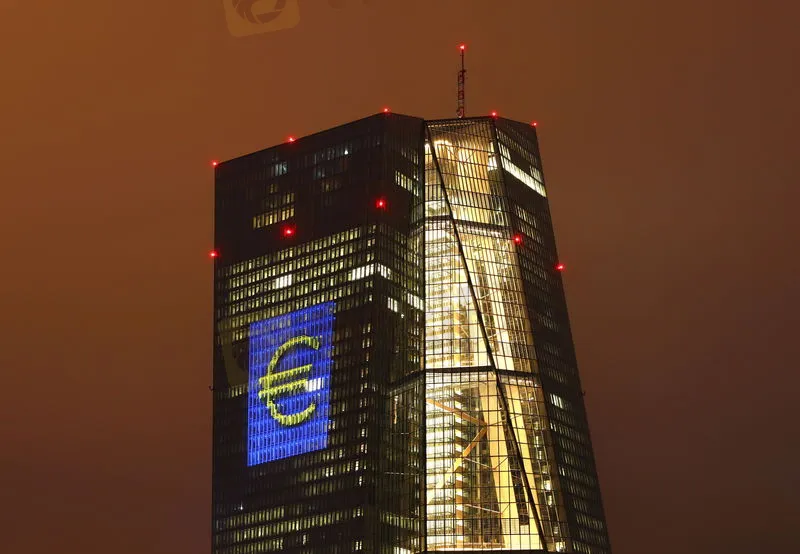简体中文
繁體中文
English
Pусский
日本語
ภาษาไทย
Tiếng Việt
Bahasa Indonesia
Español
हिन्दी
Filippiiniläinen
Français
Deutsch
Português
Türkçe
한국어
العربية
Danske Bank expects the European Central Bank to cut its final interest rate in September
Abstract:Danske Bank (CSE:DANSKE) now expects the European Central Bank to cut interest rates by another 25 basis points in September, bringing the margin rate down to 1.75%, and has scrapped its previous expectation of a rate cut in July.
Danske Bank (CSE:DANSKE) now expects the European Central Bank to cut interest rates by another 25 basis points in September, bringing the margin rate down to 1.75%, and has scrapped its previous expectation of a rate cut in July.
The bank believes there may be additional rate cuts in the fourth quarter, but the likelihood is low, as inflationary pressures have eased, but the ECB's policy path remains uncertain.
This revised outlook is based on the latest data showing that the eurozone's inflation rate fell to 1.9% year-on-year in May, down from 2.2% in April and below the ECB's 2% target.

The slowdown in inflation was primarily driven by a deceleration in services inflation, which fell from 4.0% year-on-year to 3.2%, with a month-on-month decline of 0.04%. The data indicates that the surge in inflation in April was distorted by the timing of Easter, while the average over the past two months confirmed the deflationary trend.
Slower wage growth has also contributed to easing inflationary pressures. Wages per employee fell from 4.1% in the previous quarter to 3.8% in the first quarter. The European Central Bank's staff projections for June indicate that wage growth is expected to further decline to 3.2% in 2024 and remain at 2.8% in both 2026 and 2027.
Despite the European Central Bank cutting interest rates by 25 basis points in June, ECB President Christine Lagarde's remarks were unexpectedly hawkish, suggesting that the rate-cutting cycle may be nearing its end or has already concluded.
ECB staff also revised down their inflation forecasts, to 2.0% for 2025 (previously 2.3%) and 1.6% for 2026 (previously 1.9%). Lagarde downplayed these revisions, attributing most of the changes to temporary factors such as energy prices.
Meanwhile, while the eurozone economy continues to expand, growth remains sluggish. The manufacturing PMI rose slightly from 49.0 to 49.4 in May, supported by increases in domestic and foreign output and orders, indicating that the impact of external trade uncertainties remains limited.
However, the services sector contracted for the first time since November, with the PMI falling from 50.1 to 49.7, primarily due to weak domestic and foreign demand.
Eurozone GDP growth for the first quarter was revised upward from the initial estimate of 0.3% quarter-on-quarter to 0.6%, driven mainly by Ireland's GDP growth of 10%, which benefited from pharmaceutical exports and foreign intangible asset investments.
Disclaimer:
The views in this article only represent the author's personal views, and do not constitute investment advice on this platform. This platform does not guarantee the accuracy, completeness and timeliness of the information in the article, and will not be liable for any loss caused by the use of or reliance on the information in the article.
WikiFX Broker
Latest News
How to Choose the Right VPS for Forex Trading
Still Falling for BotBro’s 60% Annual Forex Returns? Wake Up Before It Gets Too Late!
Webull Adds Crypto Trading Through Kalshi Partnership
Investment Scam Exposed: Deepfake Videos of Top Indian Leaders & Tech Icons misused to Lure Investor
Global Introducing Broker Growth Sharing Campaign
HYCM Flagged by Malaysia’s Securities Commission
AMarkets Review 2025: Read Before Trade
Markets4you Launches Global Giveaway to Celebrate 18th Anniversary
U.S. consumer prices rose 2.4% in May, below expectations
ASIC Flags New Threat: Unlicensed Finfluencers Targeting Aussie Youth Through Hype Culture
Currency Calculator


